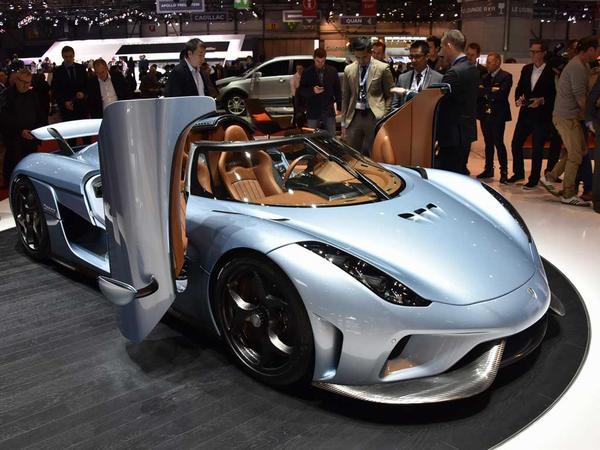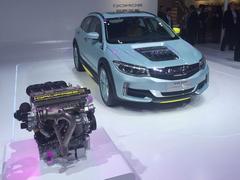Koeningsegg to Qoros in one step
Koenigsegg-backed Freevalve cam-less tech previewed in Chinese-market Qoros

The cam-less system has been developed by Swedish company, FreeValve AB, a sister company of Koenigsegg. It uses, wait for it, pneumatic-hydraulic-electric-actuator technology (PHEA) on each valve to perform the opening and closing routine. This means the engine management system has full variable control of each valve individually. Advantages are claimed to be more power combined with reduced fuel consumption, emissions and weight.
So why is it better? The cam lobes on a conventional mechanical camshaft are fixed, which is a major compromise. Ideally an engine needs one profile for a low speed trundle to the shops but a completely different profile to run flat out on a track day. Variable cam timing has helped, as has Honda's VTEC cam-lobe-switching system and BMW's Valvetronic system which mainly control valve lift, but they're still a compromise. FreeValve combines variable valve lift with variable valve timing, all in one.
The nearest to a production fully variable valvetrain to date is Fiat's MultiAir system. Instead of the cam opening the valves directly, it generates hydraulic pressure which can be released by solenoids to control the valve lift and to an extent, the timing. But the FreeValve system goes one step further and gets rid of the camshaft altogether. Hydraulic and pneumatic pressure is piped to an actuator atop each valve and an integral solenoid used to control the opening and closing.
FreeValve claims a 12-17 per cent reduction in fuel consumption under laboratory conditions compared to a state of the art 2.0-litre direct inject engine with variable camshaft timing. The company has been hard at work on this concept, which is in its sixth generation, since 2000. But it's not the first to go cam-less.
Similar concepts have been shown by BMW, Fiat and Lotus Engineering over the years, to name a few. In those cases, the valves were opened by electro-magnetic solenoids which proved too expensive, too slow and consumed too much power. Now though, FreeValve, Koenigsegg and Qoros could be on to something.
Freevalve from Freevalve on Vimeo.
[Sources: Freevalve AB]
Not an issue on an ultra rare and expensive supercar, unlikely to feature on the next Ford Fiesta.
Could every car be camless in the next 10-20 years?
For such a small company Koenigsegg invest a lot in cutting edge R&D and there's some great videos on youtube explaining some of their technology.
Christian von Koenigsegg is obviously a passionate engineer, have huge respect for the man.

What are the rules on variable timing, lift and duration?
In the mid 40s Tucker attempted hydraulic actuation, but it didn't really work.
Also this MANN engine does something with the exhaust valves:
https://www.scribd.com/doc/35947494/camless-two-st...
Not an issue on an ultra rare and expensive supercar, unlikely to feature on the next Ford Fiesta.
I always liked the concept of the rotary valve...
http://www.coatesengine.com/
Unfortunately, the limits of the ICE have pretty much nothing to do with how you open it's valves (hence we still knock 'em open with a bump stick) and by the time this makes volume, that volume will be mostly electric..............
In other news, anyone want to buy shares in my new traction engine company? I've heard they are going to be the next big thing....... That and crt TV's ;-)
Gassing Station | General Gassing | Top of Page | What's New | My Stuff








